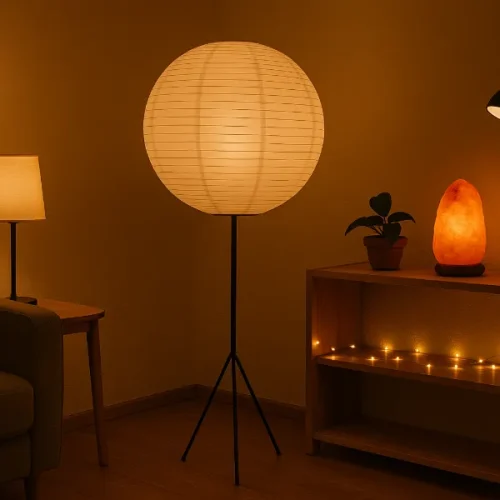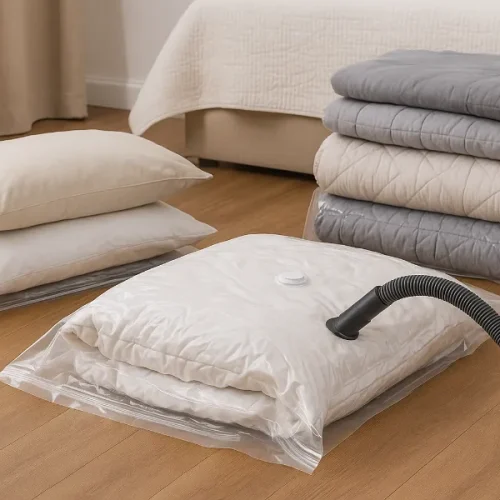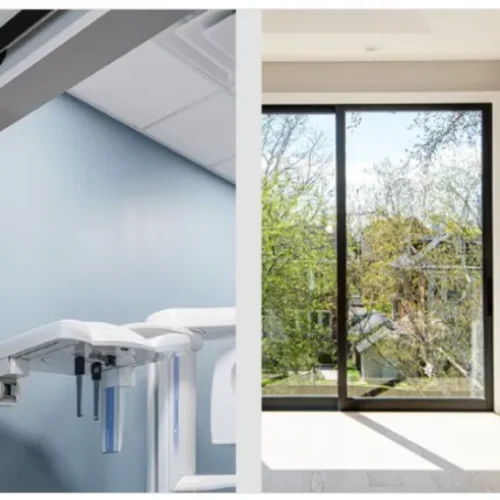If you’ve been searching for a window treatment that combines natural beauty, affordability, and timeless style, you’ve likely come across bamboo blinds indoor. They’ve been making waves in interior design circles for decades, and for good reason. Unlike heavy drapes or sterile roller shades, bamboo blinds add warmth, texture, and a bit of character to your home while still letting that coveted natural light stream in.
But are they right for your space? And if so, how do you choose, style, and maintain them? Let’s dive into everything you need to know about bamboo blinds indoor—from their fascinating origins to the practical tips that will make them last for years.
A Brief History of Bamboo Blinds
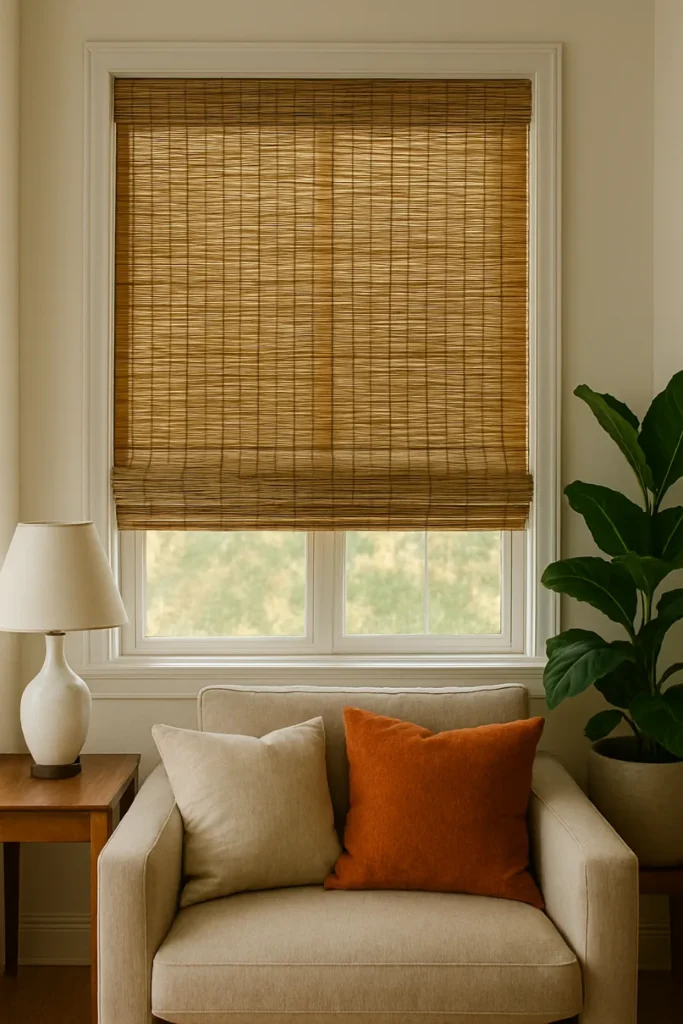
Before they became a staple in stylish modern homes, bamboo blinds had a much humbler beginning. Originating in India and known as “chiks,” these blinds were crafted from thin bamboo strips woven together. They were used primarily to block harsh sunlight while still allowing airflow—perfect for hot climates.
Meanwhile, ancient Chinese communities also developed bamboo blinds, using them for both privacy and insulation. Over time, these functional coverings evolved into decorative elements, and by the mid-20th century, they had found their way into Western homes as part of the modernist push for natural, minimalistic materials.
Today, bamboo blinds indoor remain a favorite because they carry that rich history while still feeling fresh and versatile.
Benefits of Bamboo Blinds Indoor
Why are homeowners and designers so drawn to bamboo blinds indoor? It comes down to a powerful mix of aesthetics and practicality.
Eco-Friendly Choice
Bamboo is not technically wood—it’s a grass. That means it grows astonishingly fast compared to trees, making it a renewable and eco-friendly resource. Choosing bamboo blinds helps reduce reliance on hardwood forests while still giving you a beautiful, organic look.
Budget-Friendly and Stylish
If you’ve priced out custom window treatments, you know they can cost a small fortune. Bamboo blinds are a more cost-effective option that doesn’t compromise style. For under $300, you can often outfit an entire house with bamboo blinds.
Durability in Humid Environments
Unlike fabric curtains that mold or wood blinds that warp, bamboo blinds are naturally resistant to humidity. This makes them especially well-suited for kitchens and bathrooms.
Beautiful Light Filtering
One of the biggest perks of bamboo blinds indoor is the way they filter light. Instead of blocking sunlight completely, they create a warm, dappled effect in a room. It’s soft, natural, and far more inviting than harsh blackout shades.
Texture and Warmth
Flat walls, clean lines, and neutral colors can sometimes make a space feel cold. Bamboo blinds bring in natural texture and warmth, instantly grounding a room and making it feel cozy.
Styles and Design Options
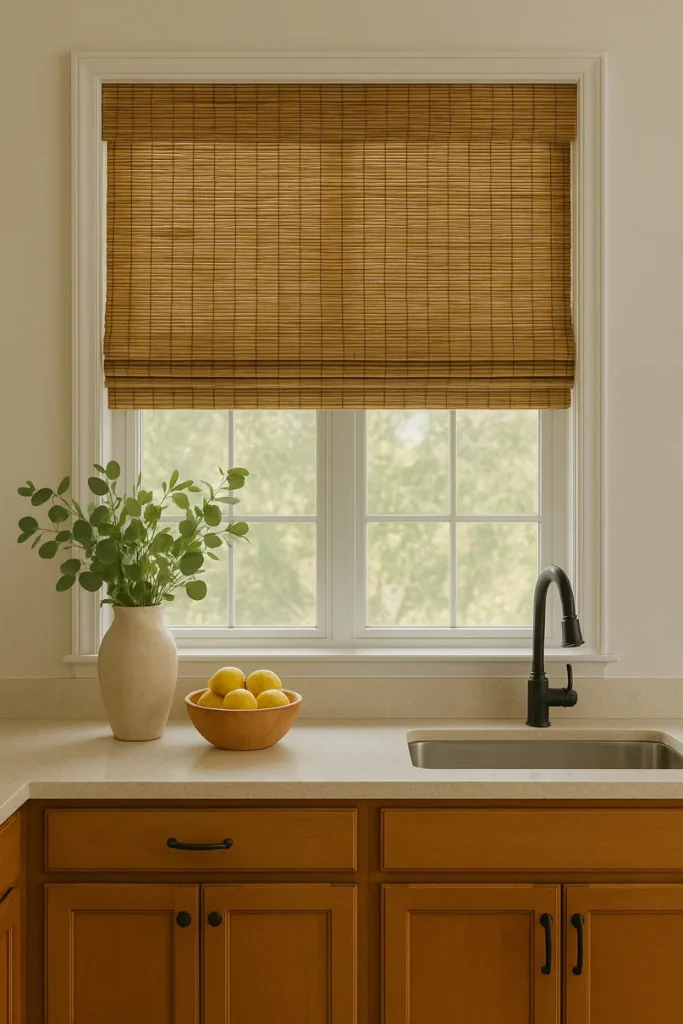
The versatility of bamboo blinds indoor is part of what makes them so popular. They can swing between rustic, coastal, modern, or even bohemian depending on how you style them.
Traditional vs Modern Looks
Traditional bamboo blinds have a raw, earthy appearance. They often feature visible knots, natural color variations, and irregular textures. Modern versions may be sleeker, with refined weaving and more consistent tones.
Colors and Textures
- Light tones: Great for airy spaces and homes with lots of white or neutral walls.
- Medium tones: Perfect for balancing grays, tans, or mixed neutral palettes.
- Dark tones: Add drama and contrast but work best in larger rooms that can handle the weight.
Pairing with Curtains or Liners
On their own, bamboo blinds offer light filtering but not full privacy. Many homeowners pair them with blackout liners or curtains for flexibility. For example:
- A sheer curtain + bamboo blind = soft elegance.
- A blackout liner + bamboo blind = ultimate control over light and privacy.
How to Choose the Right Bamboo Blinds Indoor
Selecting bamboo blinds isn’t just about picking a pretty color—it’s about fit, functionality, and safety.
Inside vs Outside Mount
- Inside mount: Fits inside your window frame for a clean, tailored look. Ideal if you have decorative trim you don’t want to hide.
- Outside mount: Hangs above or beyond the window frame, making windows look larger and letting in more light when raised.
Choosing the Right Color and Finish
Consider your flooring and wall tones. Light shades pair well with minimalistic or coastal décor, while medium and darker bamboo blinds bring depth to modern or rustic interiors.
Corded vs Cordless Options
For safety—especially if you have kids or pets—cordless bamboo blinds are the way to go. They’re easy to use and eliminate the risk of entanglement.
Best Rooms for Bamboo Blinds Indoor
You can use bamboo blinds almost anywhere, but here’s how they perform in specific spaces:
Living Room
Perfect for filtering light without sacrificing brightness. Pair with curtains for layered style.
Kitchen
Bamboo blinds hold up well against humidity and add a casual, breezy feel. Go with an outside mount to make small kitchen windows feel taller.
Bedroom
If you value privacy, consider pairing bamboo blinds with blackout liners. This way, you can enjoy the texture and beauty without sacrificing sleep.
Bathroom
Resistant to humidity, bamboo blinds work wonderfully here. Just make sure to choose a finish that can withstand splashes.
Installation Tips
Installing bamboo blinds indoor is simpler than you might think.
- Measure carefully—measure twice, order once. Windows that seem identical often differ by a fraction of an inch.
- Choose your mount—inside for clean lines, outside for dramatic height.
- Install brackets with a drill, then clip or screw the blinds into place.
- Raise them strategically—mounting blinds a few inches above the window frame draws the eye upward and makes ceilings feel taller.
Maintenance and Lifespan
Bamboo blinds are durable, but like any natural material, they need care.
- Dust regularly with a duster or vacuum brush attachment.
- Spot clean with a damp cloth, but avoid soaking.
- Expect wear over time—strings may fray, especially in south-facing sunny windows. A lifespan of 5–7 years is common before replacement may be needed.
Pro tip: If privacy is an issue, layer with a roller shade underneath. This also extends the life of your blinds by reducing sun exposure.
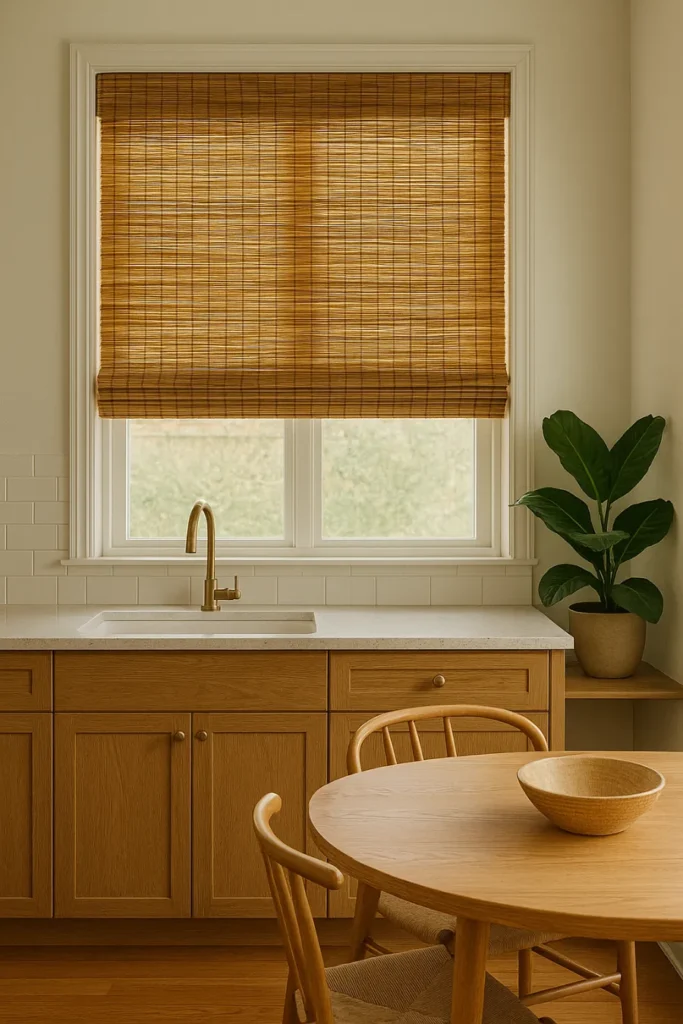
Drawbacks and Solutions
No product is perfect, and bamboo blinds indoor have a few potential downsides:
- Limited privacy: Easily solved with blackout liners or pairing with curtains.
- String wear and tear: Over time, the thin cords can weaken. Replacement kits or inexpensive new blinds can resolve this.
- Color fading: Expect some mellowing of tones, which many homeowners actually find adds to the natural charm.
Final Thoughts & Design Inspiration
Bamboo blinds indoor strike a rare balance—they’re eco-friendly, stylish, and affordable while still functional. Whether you’re designing a modern loft, a cozy cottage, or a breezy coastal retreat, they bring a sense of organic warmth that few other window treatments can match.
Pair them with curtains for a layered look, use them solo for an airy vibe, or add blackout liners for total privacy. No matter how you style them, bamboo blinds indoor are a simple yet impactful way to elevate your space.



